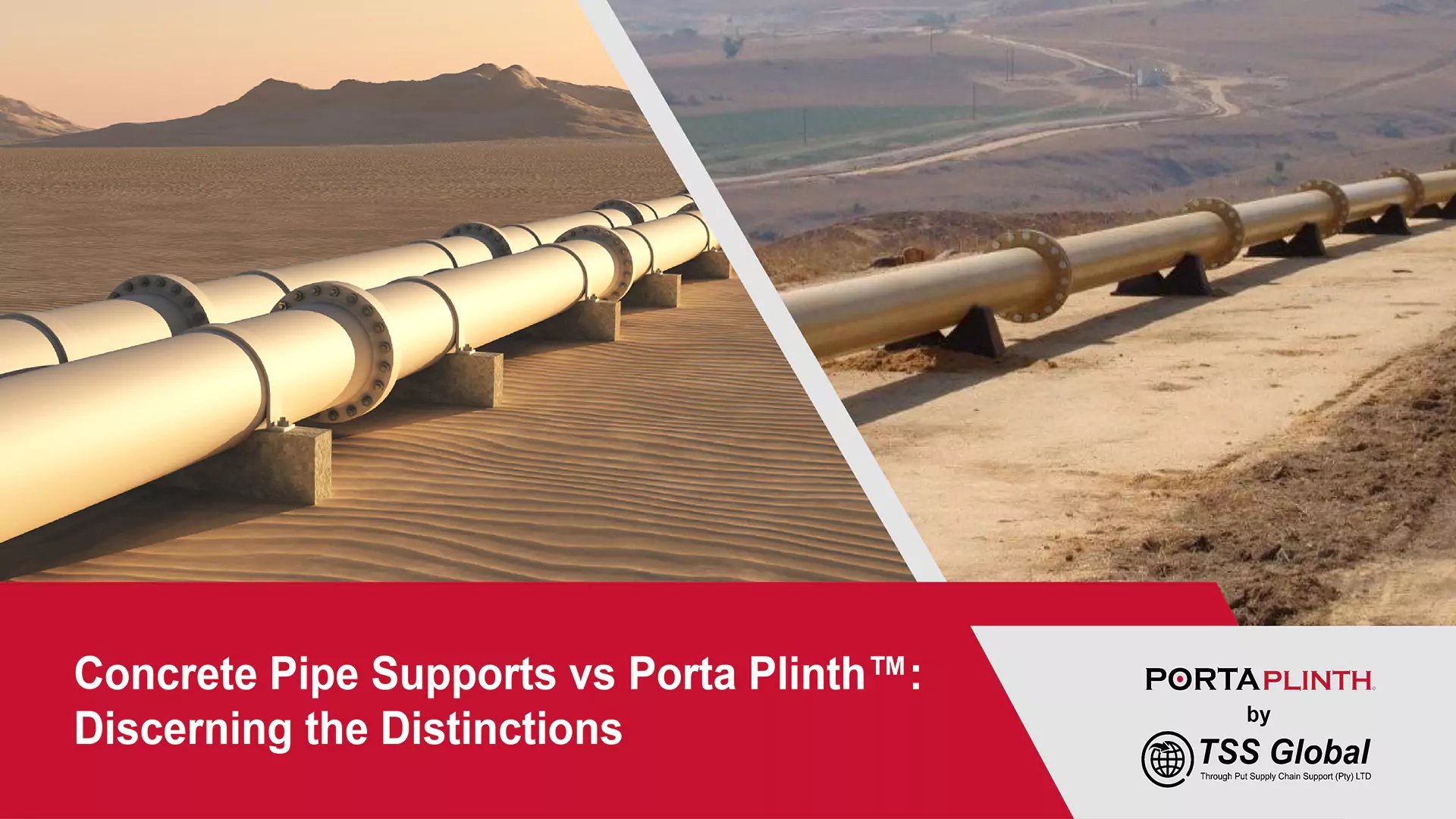When considering adequate pipeline support, one might assume it’s a straightforward endeavour – employ something robust and stable, correct? However, the realm of pipe support systems is more nuanced than it appears. It frequently presents two prominent options: concrete pipe supports and Porta Plinth™. If you are grappling with the decision between these two alternatives, rest assured, we are here to assist. In this comprehensive article, we will navigate the landscape of pipe support solutions, meticulously examine the disparities between concrete pipe supports and Porta Plinth™, and facilitate your choice of the ideal solution to safeguard your pipelines.
Concrete Pipe Supports: The Time-Honored Choice
Concrete pipe supports have enjoyed a long-standing presence in the construction and petrochemical industry. Concrete pipe supports consist of blocks or platforms fashioned from the ubiquitous material, concrete. Concrete is sturdy and resilient. What attributes define them?
Strength and Durability: The hallmark of concrete supports lies in their exceptional robustness. They can endure substantial loads, adverse weather conditions, and even the occasional mishap involving a sledgehammer.
Longevity: Once you have installed concrete supports, they tend to recede into the background of your considerations. They remain impervious to rust, corrosion, or decay, translating to a service life spanning decades, if not longer.
Customisation: Concrete supports offer an adaptable canvas to create tailored solutions. They can be shaped into diverse configurations and sizes, accommodating the precise requirements of your pipeline support project, ranging from dimensions as modest as a brick to ones as imposing as a boulder.
However, it is important to acknowledge that installing concrete supports can entail a degree of laborious effort. The process necessitates heavy machinery and skilled labour, and their transportation poses logistical challenges. Furthermore, should the need arise to relocate these supports, one must bid farewell to the prospect of an unburdened back.
Porta Plinth™: The Contemporary Contender

Now, let us warmly welcome the latest entrant on the scene – Porta Plinth™. These represent the avant-garde, technologically sophisticated gadgets of the pipe support domain. What sets them apart from their traditional counterpart?
Lightweight and Portable: Porta Plinth™ are engineered from high-density Polyethylene, a material that combines durability with featherlight quality. Their lightweight nature makes them easily transportable, negating cranes or heavy lifting equipment requirements.
Efficient and Expedient Installation: Porta Plinth™ dispenses with the need for cumbersome machinery like cranes and cement mixers. They are designed for straightforward assembly, akin to LEGO pieces, requiring no specialised skills or labour-intensive efforts.
Corrosion and Flame Resistance: Unlike concrete, Porta Plinth™ is immune to the corrosive forces of rust and decay. They stand unyielding in the face of the elements and are even flame-resistant. This is a great attribute for a product that might need to withstand a veld fire.
Stackable: Porta Plinth™ is stackable, meaning you can pile one on the other. When installing a new pipeline, you can transport many Porta Plinth™ and avoid driving back and forth between your supply depo and the pipeline face.
Reusable: Porta Plinth™ is reusable and movable. Once you finish a certain liquid or gas logistics project and the pipeline needs to be reassembled, you can reuse Porta Plinth™ for a new project.
The Verdict: Choosing the Appropriate Solution
Concrete pipe support cradles are a traditional method of supporting pipes, but they have a number of disadvantages. They are heavy, difficult to transport and install, and not reusable. They can also be prone to cracking and damage, especially in harsh environments.
Newer solutions like the Porta Plinth™ address these disadvantages. Porta Plinth™ is a lightweight, reusable pipe support cradle made from fire-resistant materials. It is easy to transport and install and can be used in various environments, including mining, petrochemicals and construction sites.
Here is a table that summarises the key differences between concrete pipe support cradles and Porta Plinth™:
| Feature | Concrete pipe support cradle | Porta Plinth™ |
|---|---|---|
| Material | Concrete | Lightweight, fire-resistant materials |
| Weight | Heavy | Lightweight |
| Reusability | Not reusable | Reusable |
| Durability | Prone to cracking and damage | Durable |
| Transport and installation | Difficult | Easy |
| Environmental impact | High | Low |
| Cost | Relatively high | Relatively low |
Overall, Porta Plinth™ offers a number of advantages over concrete pipe support cradles. It is lighter, more durable, reusable, and environmentally friendly. It is also easier to transport and install, saving time and money on projects.
Here are some specific examples of how Porta Plinth™ can be used:
The lightweight and reusable design is a major advantage to support pipes in mining operations.
To support pipes in construction projects, where the ease of transport and installation can save time and money.
To support pipes in harsh environments, such as coastal areas or areas with extreme temperatures, where the durable design of Porta Plinth™ is essential.
Overall, Porta Plinth™ is a modern and innovative pipe support solution that offers a number of advantages over traditional methods.
If you are interested in purchasing Porta Plinth™, contact TSS Global today.




